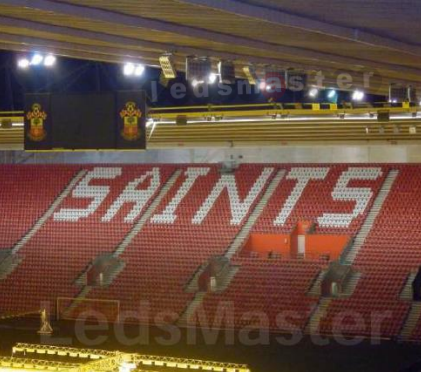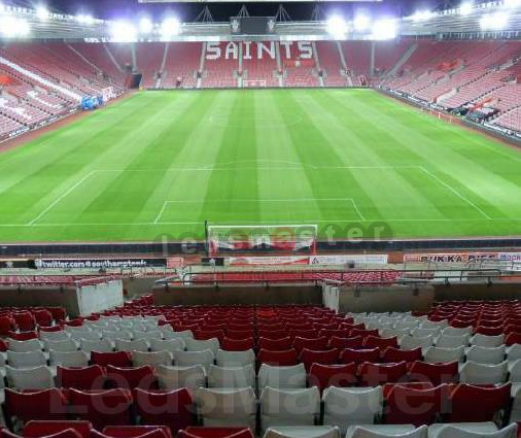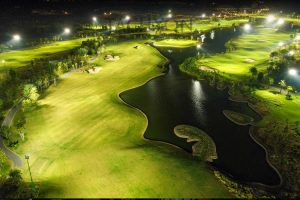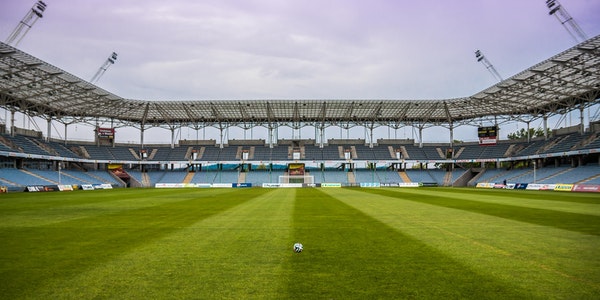- Dynamic Lighting Effects
A. Pre-Game and Halftime Shows
Entertainment Value: LED lighting systems can create dynamic light shows for pre-game and halftime entertainment, enhancing the overall spectacle and keeping the audience engaged.
Customizable Scenes: Advanced LED systems can be programmed to create customized lighting scenes that match the theme of the event or highlight special moments.
B. Interactive Lighting
Fan Interaction: LEDs can be used to create interactive lighting effects that respond to crowd noise or movements, adding an element of interactivity and making the experience more engaging for fans.
- Improved Broadcast Quality
- High-Definition Broadcasting
Enhanced TV Experience: LEDs provide the high-quality lighting necessary for high-definition broadcasts, ensuring that viewers at home see a clear and vibrant picture.
Slow-Motion Replays: The consistent and flicker-free lighting of LEDs is essential for capturing detailed slow-motion and instant replays, enhancing the viewing experience for both in-stadium spectators and TV audiences.
- Less Glare on Screens
Screen Visibility: Reduced glare from LED lighting ensures that large screens and scoreboards are clearly visible, providing spectators with essential information and replays without visual interference.
- Comfort and Safety
- Reduced Glare
Comfortable Viewing: LED systems can be designed to minimize glare, ensuring that spectators are not blinded or discomforted by harsh lights, allowing them to enjoy the game comfortably.
Directional Lighting: LEDs can be directed precisely where needed, reducing light spill and glare, and improving overall viewing comfort.
- Enhanced Safety
Well-Lit Pathways: Proper lighting ensures that all pathways, stairs, and exits are well-lit, enhancing safety for spectators moving around the stadium.
Emergency Lighting: LED systems can provide reliable emergency lighting in case of power outages or other emergencies, ensuring a safe environment for all attendees.
- Energy Efficiency and Sustainability
- Environmental Impact
Sustainability Initiatives: Many modern sports venues prioritize sustainability. The energy efficiency of LED lighting supports these initiatives, reducing the stadium’s carbon footprint and aligning with environmental goals.
Public Perception: Spectators are increasingly aware of and supportive of sustainability efforts. The use of LED lighting can enhance the stadium’s reputation and appeal to environmentally conscious fans.
- Cost Savings
Operational Costs: The reduced energy consumption of LED lighting translates into lower operational costs for the stadium. These savings can be reinvested into enhancing the fan experience, such as improved facilities or additional entertainment options.
- Flexibility and Adaptability
- Multi-Event Capability
Versatile Lighting: LEDs can be quickly adjusted to suit different types of events, from sports matches to concerts and other entertainment activities. This versatility ensures that the stadium can provide the best possible experience for any event.
Customized Atmosphere: The ability to change color temperatures and lighting scenes allows the stadium to create a unique atmosphere for each event, enhancing the overall spectator experience.
LED stadium lighting significantly enhances the spectator experience by providing superior visibility, vibrant colors, dynamic lighting effects, and a more immersive atmosphere. The advanced features and flexibility of LED systems ensure that fans enjoy a comfortable, engaging, and memorable experience at every event. As more stadiums adopt LED technology, the positive impact on the spectator experience becomes increasingly evident, making it a vital component of modern sports venue design.
C. Environmental Impact
1. Reduced carbon footprint
One of the key benefits of adopting LED (Light Emitting Diode) technology for stadium lighting is its significant positive impact on reducing the carbon footprint. This is achieved through various factors associated with the high efficiency and environmentally friendly features of LED systems. Here’s an in-depth look at how LED stadium lighting contributes to a reduced carbon footprint:
- Energy Efficiency
- Lower Energy Consumption
High Efficiency: LEDs convert a higher percentage of electrical energy into light compared to traditional lighting systems like metal halide or high-pressure sodium lamps. This efficiency results in lower energy consumption for the same level of illumination.
Impact on Power Usage: Reduced energy consumption directly translates to less electricity being used, which reduces the demand on power plants, many of which burn fossil fuels to generate electricity.
- Reduced Greenhouse Gas Emissions
Lower Emissions: By using less electricity, LED lighting reduces the amount of greenhouse gases, such as carbon dioxide (CO2), emitted from power plants. This is crucial in mitigating climate change and reducing the overall carbon footprint of the stadium.
- Longer Lifespan and Durability
- Extended Lifespan
Longer Life: LEDs have a much longer operational life (often 50,000 hours or more) compared to traditional lighting systems. This longevity means fewer replacements and less frequent manufacturing and transportation of new bulbs, both of which contribute to lower carbon emissions.
Reduced Waste: The extended lifespan of LEDs results in less waste being generated from discarded bulbs, reducing the environmental impact associated with waste disposal.
- Robust Construction
Durability: LEDs are more resistant to shocks, vibrations, and external impacts, leading to fewer breakages and replacements. This durability further contributes to reducing waste and the carbon footprint associated with manufacturing and disposing of lighting components.
- Reduced Heat Emission
- Energy Savings in Cooling
Cooler Operation: LEDs generate much less heat compared to traditional incandescent or HID lamps. This results in reduced cooling requirements for the stadium, which in turn lowers energy consumption for air conditioning and ventilation systems.
Environmental Impact: Reduced cooling needs decrease the overall energy demand and the associated greenhouse gas emissions from power plants.
- Non-Toxic Materials
- Environmentally Friendly Components
No Hazardous Substances: Unlike some traditional lighting systems that contain hazardous materials like mercury, LEDs do not contain toxic substances. This makes disposal safer and less harmful to the environment.
Simplified Disposal: The absence of hazardous materials in LEDs simplifies the disposal process and reduces the environmental impact associated with improper disposal of toxic materials.
- Support for Renewable Energy
- Compatibility with Solar and Wind Power
Renewable Integration: LEDs are highly compatible with renewable energy sources such as solar and wind power. Their low energy consumption makes it feasible to power them with renewable energy, further reducing the carbon footprint.
Sustainable Operations: By integrating LED lighting with renewable energy systems, stadiums can move towards more sustainable operations, reducing reliance on fossil fuels and lowering greenhouse gas emissions.
- Government Incentives and Regulations
- Support for Energy-Efficient Technologies
Incentives and Rebates: Many governments offer incentives, rebates, and tax credits for the adoption of energy-efficient technologies like LED lighting. These programs encourage the transition to LEDs and support the broader goal of reducing carbon emissions.
Regulatory Compliance: Increasingly, regulations are being put in place to limit the use of inefficient lighting technologies. Transitioning to LED lighting helps stadiums comply with these regulations and contribute to national and global efforts to combat climate change.
Adopting LED stadium lighting is a powerful step towards reducing the carbon footprint of sports venues. The energy efficiency, extended lifespan, reduced heat emission, use of non-toxic materials, and compatibility with renewable energy sources all contribute to significant reductions in greenhouse gas emissions and environmental impact. By making the switch to LED technology, stadiums can achieve substantial environmental benefits, support sustainability goals, and demonstrate a commitment to combating climate change.
2. Sustainability aspects
LED (Light Emitting Diode) stadium lighting represents a significant advancement in sustainability for sports venues. Beyond energy efficiency, LED technology offers several sustainability benefits that contribute to environmental conservation and support the broader goals of sustainability. Here’s a comprehensive overview of the sustainability aspects of LED stadium lighting:
- Energy Efficiency
- Reduced Energy Consumption
High Efficiency: LEDs convert a larger portion of electrical energy into light compared to traditional lighting technologies. This results in significant energy savings and reduces the demand for electricity from power plants.
Lower Operational Costs: Reduced energy consumption translates into lower utility bills for stadiums, allowing for cost savings that can be reinvested into other sustainability initiatives.
- Environmental Impact
Reduced Greenhouse Gas Emissions: By using less electricity, LED lighting reduces the emission of greenhouse gases such as carbon dioxide (CO2) from power generation. This helps mitigate climate change and supports global efforts to reduce carbon footprints.
- Longevity and Durability
- Extended Lifespan
Long Operational Life: LEDs have a significantly longer lifespan compared to traditional lighting systems. This reduces the frequency of replacements and the environmental impact associated with manufacturing, transportation, and disposal of lighting components.
Less Waste Generation: Fewer replacements mean less waste, contributing to overall waste reduction and promoting a more sustainable lifecycle for stadium lighting.
- Robust Construction
Resistance to Impact: LEDs are durable and resistant to shocks and vibrations, reducing the likelihood of breakage and the need for replacements due to physical damage. This durability further extends the lifespan of LED fixtures.
- Environmental Impact
- Reduced Heat Emission
Lower Cooling Requirements: LEDs emit less heat compared to traditional lighting technologies. This results in reduced cooling loads for stadiums, leading to additional energy savings and a decreased environmental footprint.
- Non-Toxic Materials
Safe Disposal: LEDs do not contain hazardous materials such as mercury, which is present in some traditional lighting systems. This makes disposal safer and less harmful to the environment, aligning with waste management best practices.
- Compatibility with Renewable Energy
- Integration Opportunities
Support for Renewable Sources: LED technology is compatible with renewable energy sources such as solar and wind power. This allows stadiums to reduce reliance on fossil fuels and further decrease their environmental impact by utilizing clean energy for lighting operations.
- Energy Management
Smart Systems Integration: LED lighting can be integrated with smart control systems to optimize energy use based on real-time conditions and needs. This enhances energy management practices and maximizes efficiency throughout the stadium.
- Public Perception and Corporate Responsibility
- Demonstrating Commitment
Environmental Stewardship: Adopting LED stadium lighting demonstrates a commitment to environmental stewardship and corporate social responsibility (CSR). This enhances the stadium’s reputation and appeal to environmentally conscious fans, sponsors, and stakeholders.
- Compliance and Incentives
Regulatory Compliance: Many regions have regulations and incentives promoting energy efficiency and sustainability. LED lighting helps stadiums comply with these regulations and qualify for incentives such as rebates and tax credits.
- Operational Benefits
- Improved Performance and Experience
Enhanced Visibility: LED lighting provides superior illumination quality, enhancing the spectator and player experience by improving visibility and reducing glare. This contributes to a more enjoyable and engaging atmosphere during events.
- Cost Savings
Long-Term Financial Benefits: While the initial investment in LED lighting may be higher, the long-term savings from reduced energy consumption, lower maintenance costs, and operational efficiencies result in a favorable return on investment (ROI).
LED stadium lighting represents a sustainable choice for sports venues, offering energy efficiency, durability, reduced environmental impact, and compatibility with renewable energy sources. By adopting LED technology, stadiums can achieve significant operational savings, enhance the spectator experience, and demonstrate leadership in environmental sustainability. As the demand for sustainable practices continues to grow, LED lighting stands out as a crucial component of modern sports venue design and management.
III. Technological Advancements
A. Smart Lighting Systems
1. Integration with IoT
The integration of LED (Light Emitting Diode) stadium lighting with IoT (Internet of Things) technology enhances functionality, efficiency, and management capabilities, providing numerous benefits for sports venues. Here’s an overview of how IoT integration enhances LED stadium lighting systems:
- Smart Control and Monitoring
- Real-Time Adjustments
Dynamic Lighting Control: IoT enables real-time adjustments to lighting levels, colors, and patterns based on environmental conditions, event schedules, or specific requirements (e.g., sports matches, concerts).
Energy Optimization: Automated adjustments help optimize energy use by dimming or brightening lights as needed, reducing operational costs and environmental impact.
- Remote Management
Centralized Control: IoT platforms allow for centralized control and monitoring of all lighting fixtures across the stadium. This simplifies management tasks and ensures uniformity in lighting throughout the venue.
Maintenance Alerts: IoT sensors can detect issues such as bulb failures or energy inefficiencies, sending alerts for proactive maintenance and minimizing downtime.
- Enhanced Fan Experience
- Dynamic Lighting Effects
Entertainment Value: IoT-enabled LED lighting systems can create dynamic lighting effects and immersive experiences during pre-game shows, halftime events, or special ceremonies. This enhances the overall fan experience and engagement.
(To Be Continued)



